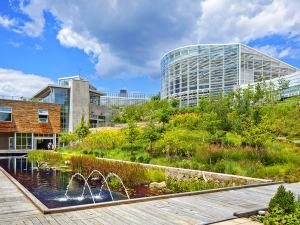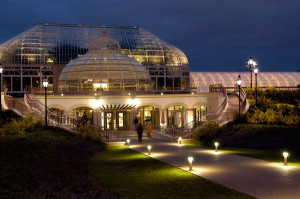In a world where the West Coast is experiencing record drought and the East Coast is going through one of the coldest and longest winters on record, it’s hard to not think about the effect we’re having on the environment. As architects, we’re seeking new ways to use materials that not only fit within a given environment, but either leave no negative influence on the surrounding environment, or better yet, give back to the environment in which it is built.
In Pittsburgh, Pennsylvania, the Phipps Center for Sustainable Landscapes does just that. Not only is it a masterfully-designed site, but is the only structure to be given the four highest sustainable building certifications in the world. They’ve received WELL Building Platinum certification (the only site to receive it), LEED Platinum certification, Four Stars Sustainable SITES Initiative™ certification and has been certified a ‘Living Building’ by the International Living Future Institute (one of only four in the world!).
One of the most impressive feats of the center is that it’s net-zero energy, meaning that it produces just as much energy, or more, than it uses. Using sustainable sources of energy like solar (photovoltaic cells), geothermal (geothermal wells) and wind energy, they can passively harvest naturally-produced energy that would otherwise go unused. They have even designed the land to grow native vegetation that naturally filters their water without harmful chemicals or expensive filtration systems.
The building is the first of its kind, providing a wondrous example of how we can create something beautiful and sustainable. It’s a fitting addition to the Phipps Conservatory and Botanical Gardens, which is the home to a beautiful Victorian glasshouse that does a great job of connecting its visitors with nature. The welcome center, built in 2005, was also built with energy efficiency in mind, as it is built partially underground.
It’s an exciting time for architecture. We’re finding new and cheaper ways to use technology that leave less of a negative imprint on the natural world. Ultimately, they help us blend buildings with the surrounding environment both naturally and aesthetically.
Read the full story at inhabit.com

